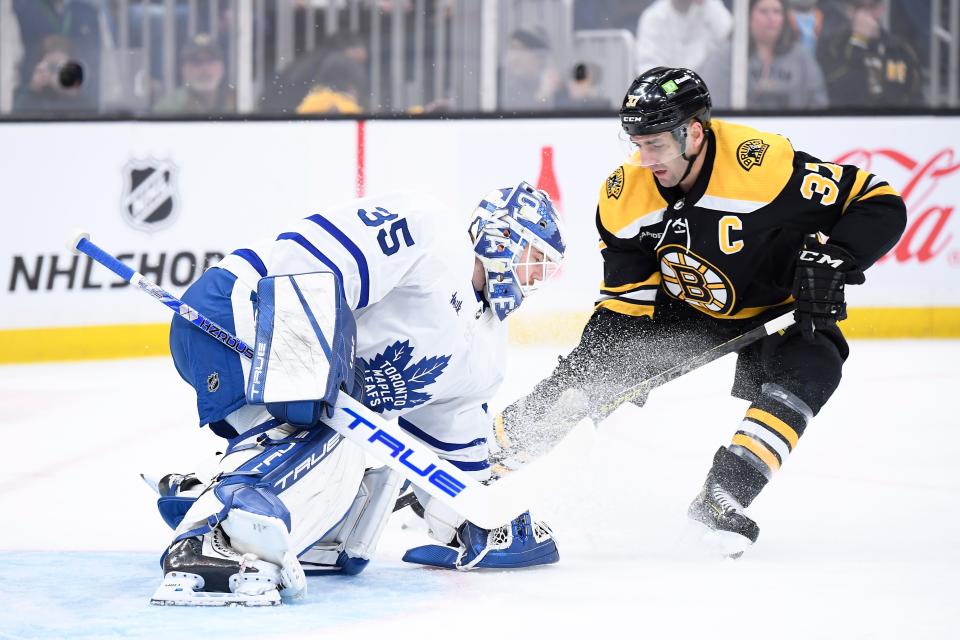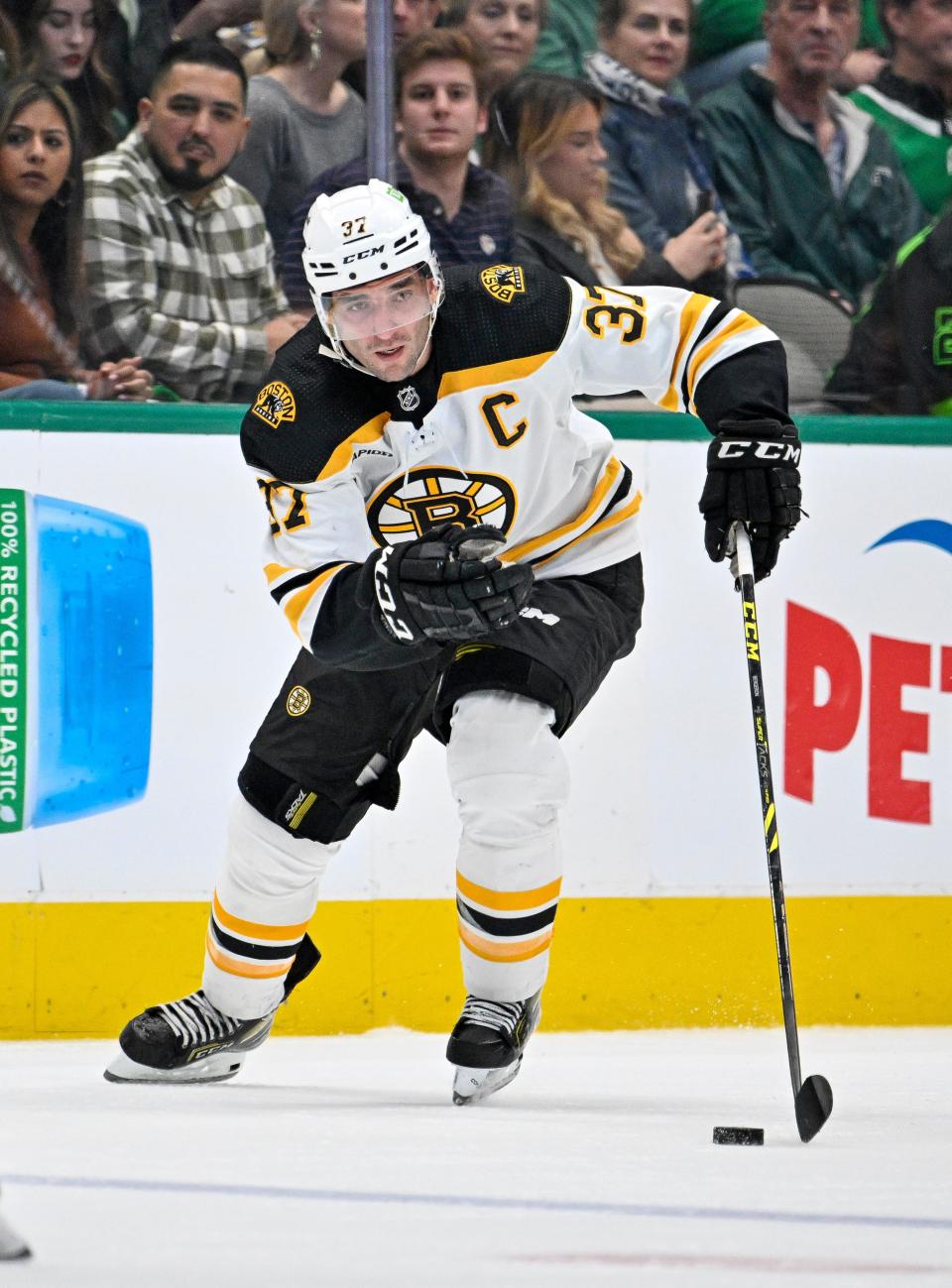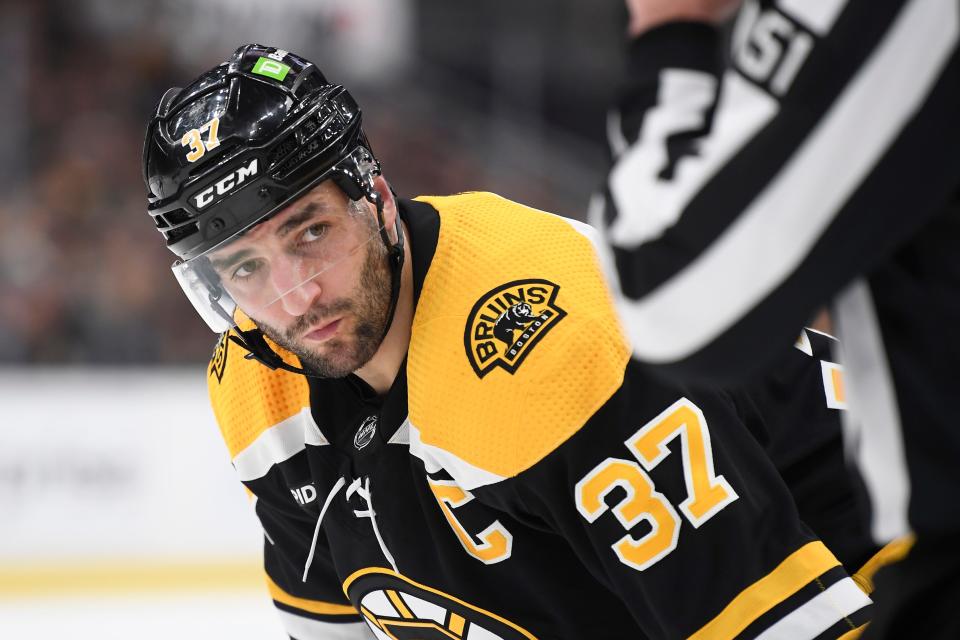With every rattle of the hockey helmet – that scary but only bloody scrape with Sidney Crosby on the TD Garden sideboards a couple of seasons ago comes to mind – it’s been with a sense of fate that any engaged fan knew Patrice Bergeron would someday say enough.
Someday came Tuesday, the day after Bergeron turned 38, in a lengthy retirement statement that ends a National Hockey League career that began 20 years ago.
A relatively unheralded second-round draft choice, Bergeron caught prospect watchers off guard by cracking Boston’s NHL roster at age 18.
His was not the kind of game that wowed people as he jumped over the boards. Not the most flamboyant of skaters, not overly big or tough or with a cannon of a slapshot, Bergeron initially arrested the more-sophisticated hockey minds because, as Toronto Star writer Damien Cox publicly observed during the 2010 Olympics, he always makes the right play.

A 38-year-old brain inside an 18-year-old body, that’s what the Bruins added to their 2003-04 team. Coach Mike Sullivan found a place for Bergeron on the right wing, and management asked veteran Martin Lapointe to watch over the French-first kid from Quebec City.
At the time, the Bruins were captained by Joe Thornton and had the league’s top rookie, Andrew Raycroft, in goal. The rest were mostly veteran players, not unlike the team that just broke NHL points and wins records before breaking their fans’ hearts in the playoffs.
More: Impact players and playmakers: Our 2023 Boys Lacrosse Super Team and All-Stars
In his first Stanley Cup playoffs, Bergeron scored an overtime game-winner, giving Boston a 2-0 series lead over Montreal that the Bruins would extend to 3-1, only to lose in seven.
He spent the ensuing lockout season playing center for the AHL Providence Bruins, assuming the role he would carry throughout the rest of his playing career.
That career almost ended before it started when, in October 2007, he couldn’t complete a reverse pivot in the left-wing corner before his face was driven into the dasher by onrushing Flyers defenseman Randy Jones.
The concern with which the organization contemplated the sudden cancellation of such a promising career was eclipsed by an overall sadness that, in a twisted way, reflected on Bergeron’s love for hockey.
People could feel it watching him play, watching him decide what to do.
When coaching in Phoenix only three weeks before that catastrophic injury, Wayne Gretzky had just seen Bergeron school his Coyotes and said to the media scrum in the hallway, “I don’t think you people realize how good this guy is.”
It takes one to know one.
Citing his relentless pursuit toward improvement, Bruins GM Don Sweeney recently called Bergeron “one of the best players I’ve ever seen.”

The thing that pops for this hockey lifer is how Bergeron’s game has morphed over the years. Not known as a shooter per se, Bergeron developed a one-timer later in his career not because he wanted to be a 40-goal scorer but because he thought it would help his team win.
Hockey basically has two kinds of players: those who can always be found smack in the middle of the battle, and opportunists who skate around the game, plotting their moment of surprise.
Bergeron is neither. He competes every second and, at the same time, studies the game to decide his best role. The changes are evident decade to decade, season to season and even game to game.
More: Personal sacrifice led to more team success for our Boys Lacrosse Player of the Year
It wouldn’t be enough to rename the Frank Selke Trophy (for the NHL’s best defensive forward) after him. Bergeron’s signature on the rink is one of changing himself to accommodate his team. If there were a Patrice Bergeron-Cleary Award, this would be it.
Following that early-career concussion, Bergeron would miss almost all of the 2007-08 season and not find his game again until after sustaining a second, milder concussion in a collision with future teammate Dennis Seidenberg in December 2008.
At the time, head injuries were an understandable preoccupation for the Bruins, who soon thereafter would lose uber-talented center Marc Savard to premature retirement.
The Bruins were fortunate that Bergeron’s only other concussion on record, a late hit by Claude Giroux at the tail end of a second-round sweep of Philadelphia, only cost him the first two games of the 2011 Eastern Conference Final.

With 427-613-1,040 regular-season totals, Bergeron finishes his career third in all-time franchise scoring behind Ray Bourque (1,506) and Johnny Bucyk (1,339).
Like all the greats, Bergeron’s biggest moments have come in the playoffs.
NESN will no doubt replay the Game 7 comeback against Toronto in 2013 capped by Bergeron’s overtime series winner, but the one that sticks out for me is the partial breakaway on his knees in Game 7 in Vancouver. The short-handed goal, coming late in the second period, was the backbreaker on a night the Bruins conspired to give their fans like they hadn’t experienced in 39 years.
The heartbreaking regrets of 2013, 2019 and, yes, 2023, will haunt, but never forget Bergeron delivered.
In doing so, he gave his all. He will be elected to the Hockey Hall of Fame, and No. 37 will join the rest of the Bruins’ retired numbers in the TD Garden rafters.
Finally, the “C” will be stitched onto Brad Marchand’s No. 63 sweater.
And now Sweeney’s work to redefine roster structure and team culture, aka the next generation of Bruins hockey, begins in earnest.
Mick Colageo writes about hockey for The Standard-Times. Follow him on Twitter @MickCollageo.
This article originally appeared on The Patriot Ledger: Patrice Bergeron retires after 20 years with the Boston Bruins